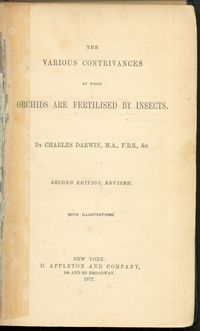#FertilisationOfOrchids
Fertilisation of Orchids
Fertilisation of Orchids is a book by English naturalist Charles Darwin published on 15 May 1862 under the full explanatory title On the various contrivances by which British and foreign orchids are fertilised by insects, and on the good effects of
Read More..
by Charles Darwin
Ratings
Likes
Reviews
Popularity
Ranks
This #hashtag is not ranked yet.



